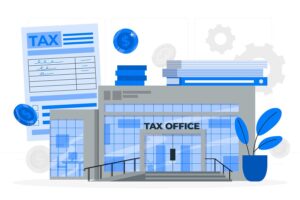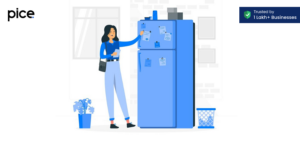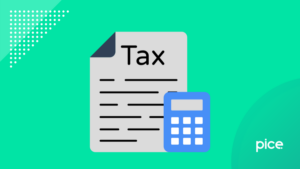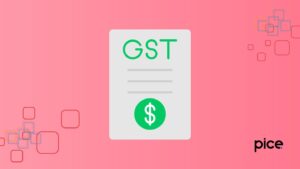Know the Latest Amendment in Composition Scheme Under GST
- 13 Aug 24
- 10 mins

Know the Latest Amendment in Composition Scheme Under GST
Key Takeaways
- Eligibility is limited to small businesses with annual turnover below ₹1.5 crore (₹50 lakhs for certain services).
- This is not applicable to interstate suppliers or import/export businesses.
- Businesses must issue bills of supply instead of tax invoices.
- Taxpayers cannot claim an input credit (ITC).
- Offers lower GST rates specific to business types.
- Requires quarterly GST return filings instead of monthly.
- Allows switching between Composition and regular GST schemes with proper notification.
The GST (Goods and Services Tax) Composition Scheme is a simple and easy tax compliance scheme for small and medium-sized businesses. It is designed to reduce the burden of compliance for small taxpayers by allowing them to pay GST at a fixed rate of turnover.

This scheme is optional and is aimed at reducing the compliance cost for small taxpayers.
Conditions for Availing Composition Scheme
To avail of the Composition Scheme under the GST, a taxpayer must meet the following conditions:
- Annual Turnover Limit: The taxable person's annual turnover in the preceding financial year should not exceed a specified limit. This limit varies based on the country's specific GST regulations but is generally set to enhance inclusivity for small and medium enterprises (SMEs). For example, in India, as of my last update, the turnover limit for eligibility under the composition scheme was ₹1.5 crores for most states, with a higher threshold for certain northeastern states and Himachal Pradesh.
- Type of Business: The scheme is available to taxpayers who are manufacturers, traders, or restaurants (not serving alcohol). Service providers were largely excluded from the scheme, with some exceptions, such as restaurant services. However, recent amendments have allowed certain service providers and those engaged in supplying services through e-commerce platforms to opt for the composition scheme, subject to specific conditions and limits.
- No Interstate Supply: Taxpayers opting for the composition scheme cannot engage in interstate supply of goods. This condition is meant to simplify the tax structure for businesses operating on a smaller scale, primarily within their state.
- No Export or Import: Under the composition scheme, taxpayers are not allowed to engage in the import or export of goods and services. This includes supplies to and from SEZs (Special Economic Zones).
- Payment of Tax at Normal Rates for Non-Eligible Goods and Services: If a composite taxpayer also deals in goods or services not eligible for the scheme, they must pay taxes at normal rates for those items.
- No Input Tax Credit: Taxpayers under the composition scheme cannot claim input tax credit. This is because they are paying tax at a nominal rate on their turnover without the ability to track input taxes.
- Must Issue a Bill of Supply: Instead of a tax invoice, taxpayers under this scheme must issue a bill of supply, as they are not allowed to collect tax from their customers.
- Compliance with Tax Rate and Payment: Taxpayers must pay tax at a fixed percentage of their turnover, as prescribed under the scheme, which varies for manufacturers, traders, and service providers.
- Filing of Returns: Although they benefit from lesser compliance requirements, taxpayers under this scheme still need to file periodic returns, albeit less frequently than those under the regular GST regime.
These conditions aim to keep the scheme straightforward and manageable for small businesses, ensuring they benefit from reduced compliance burdens while contributing their fair share to the tax revenues
Composition Scheme Turnover Limit

The turnover limit for eligibility under the GST Composition Scheme is a critical parameter that determines which businesses can opt for this simplified tax regime. The specific limit can vary depending on updates to GST laws and regulations, and it may also differ based on the country and specific provisions within its GST framework.
As of my last update in April 2023, in India, the turnover limit for the GST Composition Scheme was set as follows:
- For traders and manufacturers: The turnover limit was set at ₹1.5 crore in the previous financial year for eligibility to opt into the composition scheme. This limit allowed small traders and manufacturers to benefit from the scheme, enabling them to pay GST at a nominal rate of their turnover instead of going through the detailed process of GST calculation.
- For service providers: A significant amendment was to provide benefit of the composition scheme to service providers and also to include certain service providers in the scheme with a lower turnover limit compared to traders and manufacturers. Specifically, the turnover limit for service providers was set at ₹50 lakhs in the previous financial year.
- Special category states: There might be variations in the turnover limit for states classified under special categories, typically northeastern states and hilly regions such as Himachal Pradesh and Uttarakhand. These regions often have different economic conditions, and the turnover limit for the composition scheme might be adjusted accordingly to accommodate the smaller scale of businesses operating there.
As of my last update in April 2023, there have been several amendments over time to the GST Composition Scheme to make it more beneficial and accessible for small businesses.
Amendments to the GST Composition Scheme typically aim to simplify compliance, make the scheme more attractive to small and medium enterprises (SMEs), and address any practical issues faced by businesses. Key amendments have included:
Recent amendments to composition scheme
The amendments in the GST Composition Scheme and the inclusion of service suppliers, along with other GST provisions, reflect significant updates intended to simplify compliance, broaden the scheme's applicability, and clarify tax obligations.
Here's a detailed breakdown of each point:
- Option to Pay Tax Under the Composition Scheme for Registered Persons Supplying Goods through E-Commerce Operator: This amendment allows small suppliers using e-commerce platforms to opt for the composition scheme, potentially reducing their tax burden and simplifying compliance requirements.
- Penalty Provisions for E-Commerce Operator: Introducing penalty provisions for e-commerce operators emphasizes the importance of compliance with GST laws, ensuring they diligently collect and remit taxes on behalf of their suppliers.
- Input Tax Credit for Expenditure Related to Corporate Social Responsibility (CSR): Allowing Input Tax Credit (ITC) for CSR expenditures aligns tax incentives with social responsibility, encouraging businesses to contribute to social welfare activities.
- Maximum Period Defined for Filing Returns Under GST: Defining a maximum period for filing GST returns aims to improve compliance rates, ensure timely tax collection, and reduce the administrative burden on businesses.
- Decriminalization of Certain Offenses: This measure is intended to foster a more business-friendly environment by reducing the fear of criminal penalties for minor compliance errors or omissions in GST filings.
- Facilitating the Information Shared on the GST Portal with Other Systems: Enhancing data sharing between the GST portal and other government systems can streamline various processes, such as compliance checks and refunds, making the system more efficient.
- Place of Supply in Certain Cases: Clarifying the place of supply rules, especially for cross-border transactions, helps businesses understand their tax obligations better, preventing disputes and double taxation.
- Revision in the Definition of the Non-Taxable Online Recipient: Updating this definition can impact how digital services are taxed and determine the applicability of GST for international transactions involving digital products and services.
- Sale of Goods From Custom Bonded Warehouse Before Clearance Shall Attract Reversal of ITC Under Rules 42 & 43: This amendment ensures that ITC is only claimed for goods that have completed the import process and have been duly taxed, preventing tax credit misuse.
- Removal of Confusion Regarding the Availability of Exemption from GST Registration Under Section 23: Clarifying exemptions from GST registration helps small businesses and specific service providers understand when they are not required to register or collect GST.
- Clarification on Retrospective Applicability of Exemption to Certain Activities Covered Under Schedule III: This provides certainty to businesses about the tax treatment of specific activities, ensuring that past actions are not unexpectedly subjected to tax.
Conclusion
The GST Composition Scheme offers a simplified tax compliance pathway for small and medium-sized enterprises (SMEs), reducing the compliance burden and aiding in their growth.

With eligibility based on annual turnover and type of business and prohibiting interstate and international trade, it targets local businesses seeking simpler tax processes.
Recent amendments, including the inclusion of service providers and e-commerce suppliers, have made the scheme more accessible and beneficial. These changes, alongside provisions like the inability to claim Input Tax Credit and the requirement to issue bills of supply, are designed to streamline tax compliance, making it easier for small businesses to thrive in a competitive economic landscape.
💡If you want to make the most of the PICE business payment solution, take a demo session now to see how it works for you.
 By
By 

















